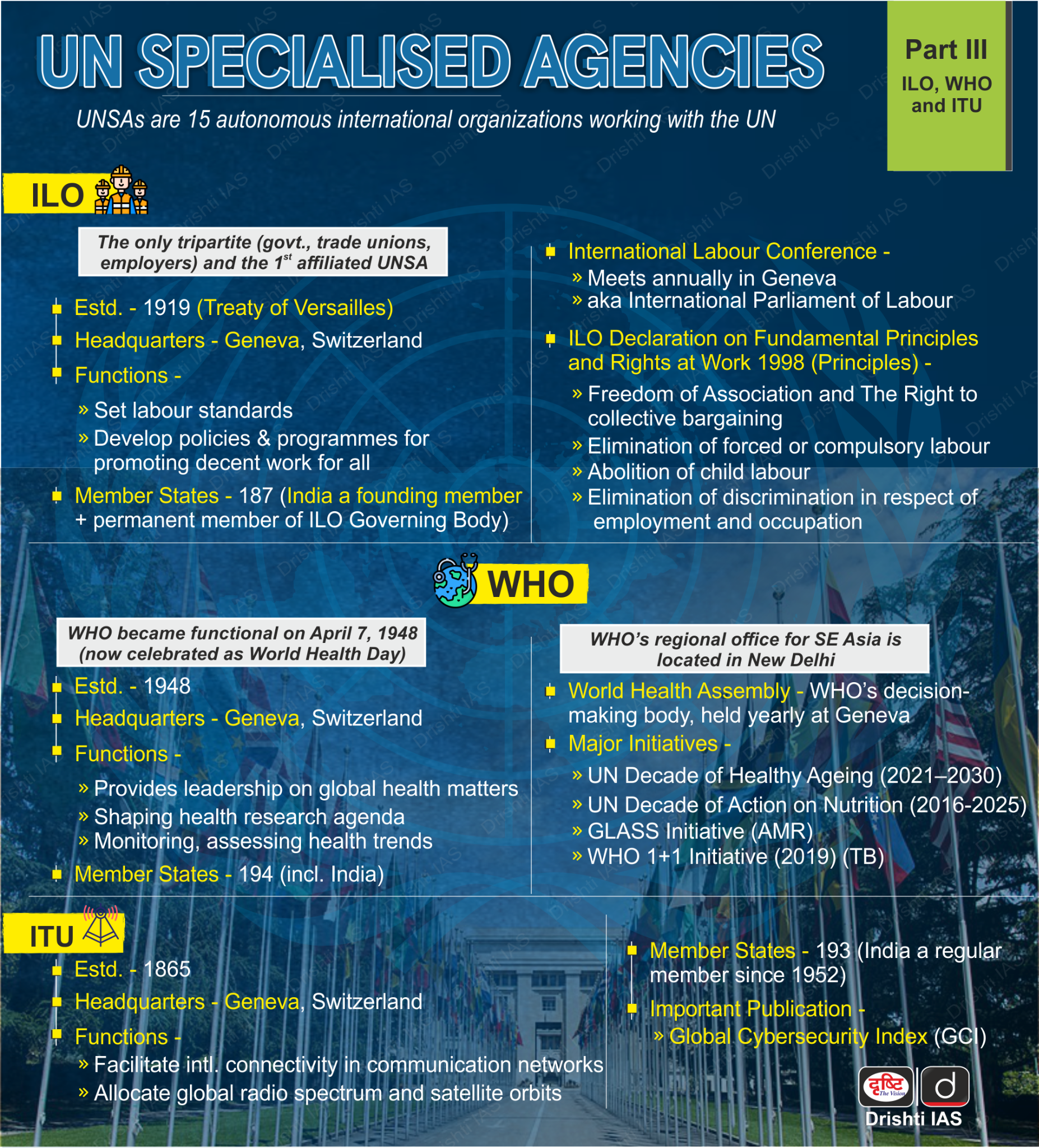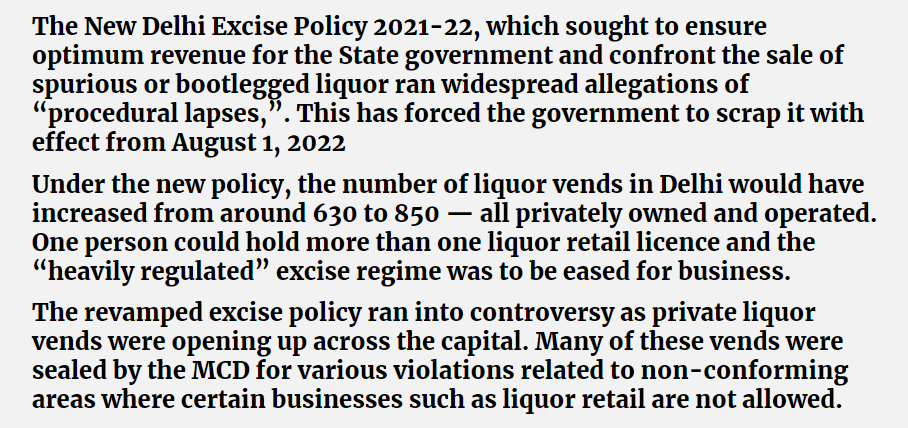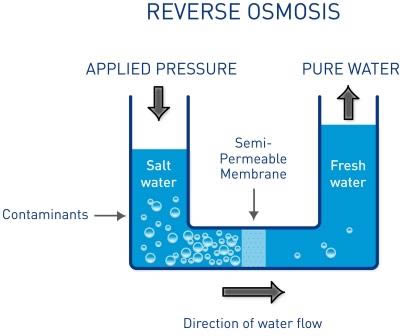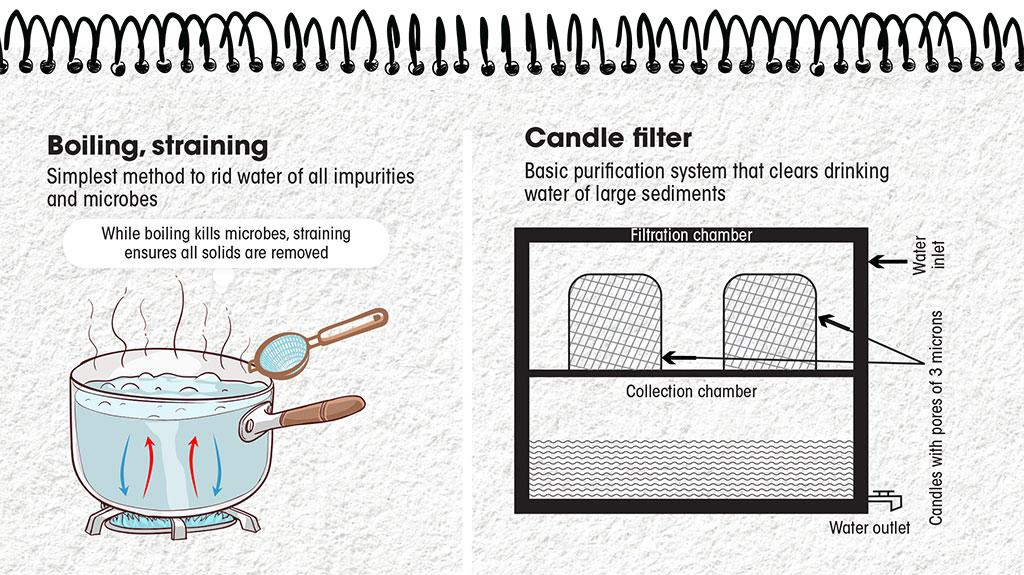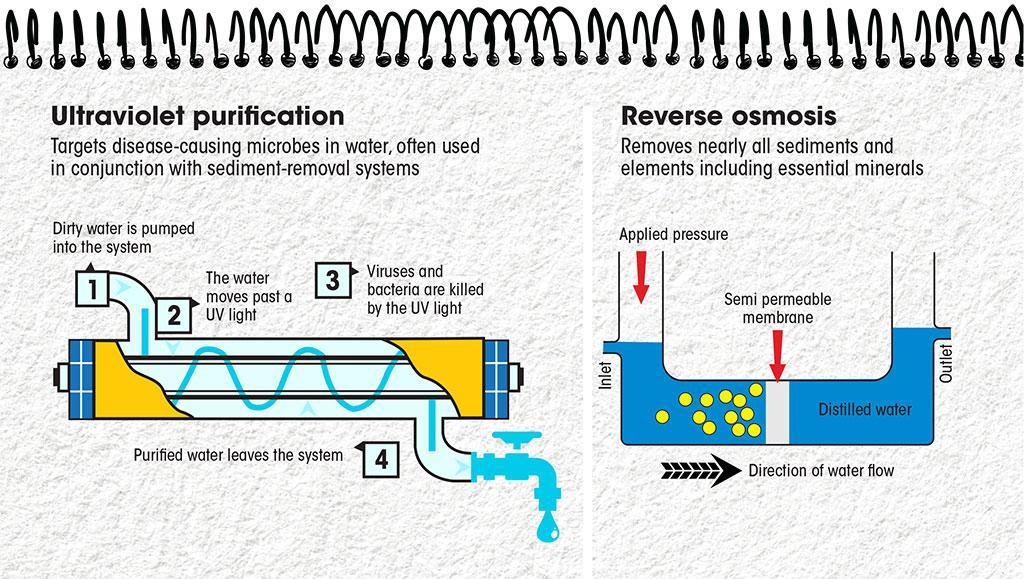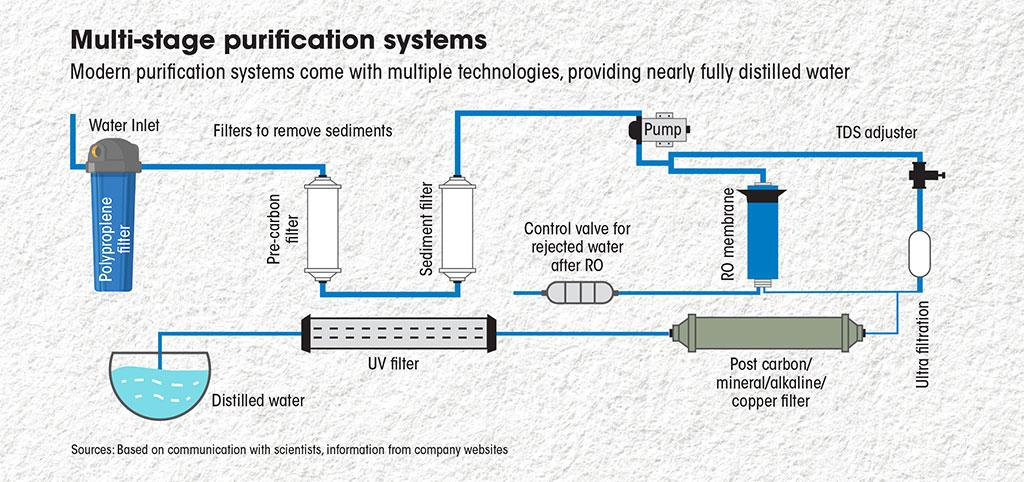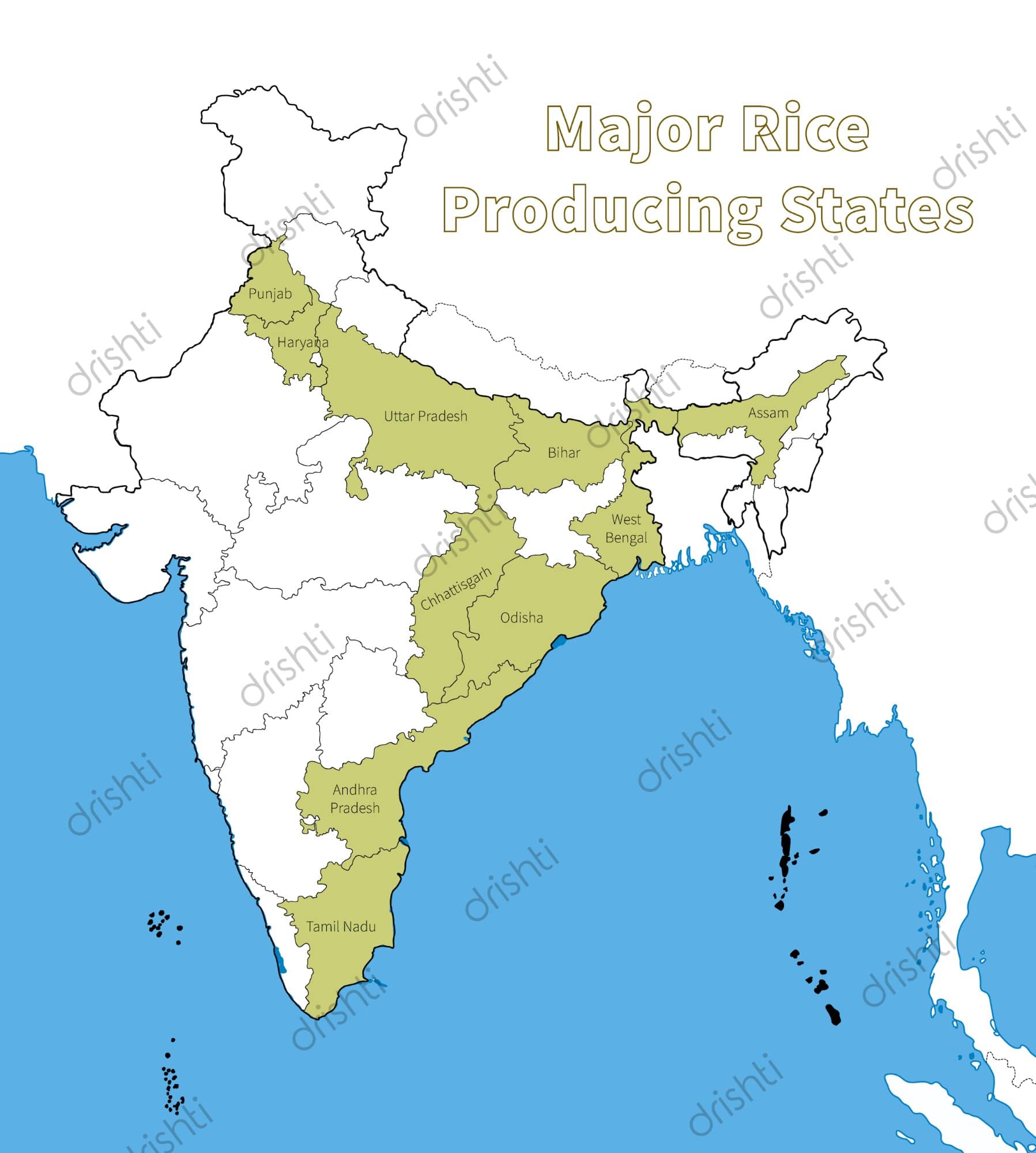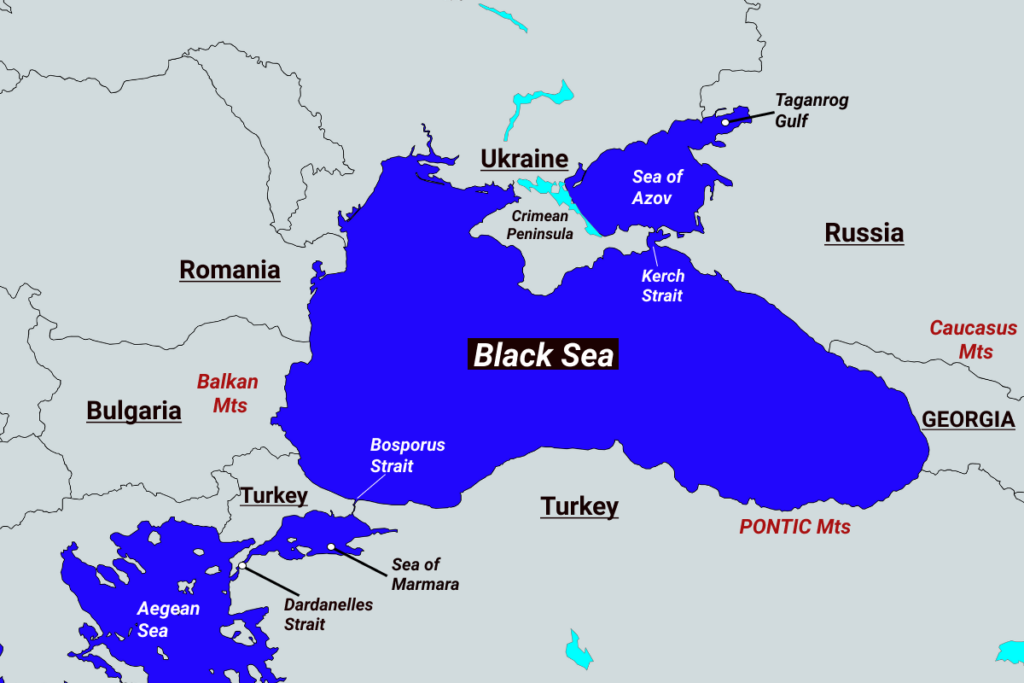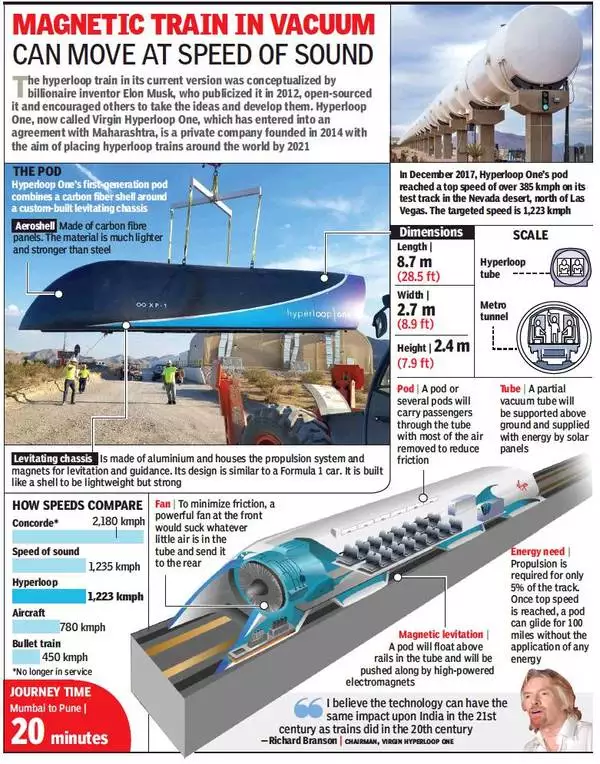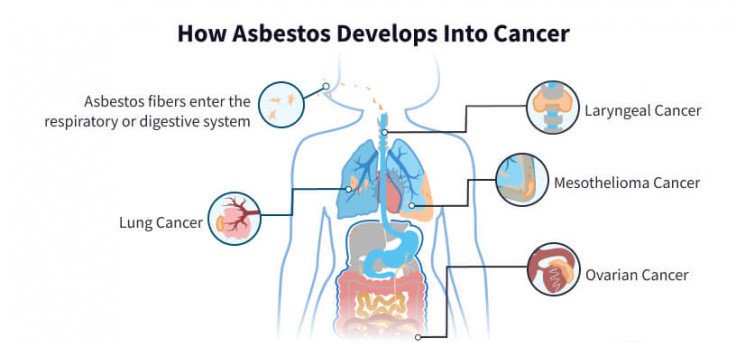Social Justice
Fair Share for Health and Care Report
For Prelims: World Health Organization (WHO), Fair Share for Health and Care Report, Devaluation of Caregiving, Gender Pay Gaps, Universal Health Coverage (UHC).
For Mains: Fair Share for Health and Care Report, Issues relating to development and management of Social Sector/Services relating to Health, Education, and Human Resources.
Why in News?
Recently, the World Health Organization (WHO) released a new report titled- Fair Share for Health and Care report, addressing the gender gap in global healthcare.
What are the Key Highlights of the Report?
- Gender Disparities in Health and Care Workforce:
- Women comprise 67% of the paid global health and care workforce. Additionally, they perform an estimated 76% of all unpaid care activities.
- This highlights significant gender disparities in both paid and unpaid care work.
- Women in low- or middle-income countries could be USD 9 trillion better off if their pay and access to paid work were equal to that of men.
- Not Adequately Represented on Decision-Making:
- Women are not adequately represented on decision-making tables. Women are overrepresented in lower-status roles, comprising the majority of nurses and midwives.
- They are, however, underrepresented in leadership roles. Medical specialties are still dominated by men. Women made up 25% to 60% of doctors but between 30% and 100% of nursing staff across 35 countries.
- Underinvestment in Health Systems:
- Chronic underinvestment in health and care work has led to a vicious cycle of unpaid care work, reducing women's participation in paid labour markets, hindering economic empowerment, and impeding gender equality.
- Devaluation of Caregiving:
- Caregiving, primarily performed by women, tends to be undervalued, leading to lower wages, poor working conditions, decreased productivity, and a negative economic impact on the sector.
- Implications of Gender Pay Gaps:
- Pay gaps limit women’s investment in their family and community, which is where they are likely to reinvest.
- Globally, on average, 90% of women’s earnings are directed towards their families’ well-being, compared to only 30-40% of men’s.
- Higher Levels of Violence:
- Women in healthcare disproportionately experienced higher levels of gender-based violence.
- According to some estimates, a quarter of workplace violence across all sectors of the globe occurs in healthcare.
- At least half of all employees in the healthcare sector have reported experiencing violence at some point in the workplace.
- Indian Scenario:
- In India, women spent around 73% of their total daily working time (that is, the combined average time spent on unpaid and paid work recorded through national daily time-use surveys) on unpaid work, compared to men who spent around only 11% of their daily working time on unpaid work.
- In the United Kingdom, nearly 4.5 million people took on unpaid work during Covid-19, 59% of whom were women, with nearly 3 million working simultaneously.
- In India, women spent around 73% of their total daily working time (that is, the combined average time spent on unpaid and paid work recorded through national daily time-use surveys) on unpaid work, compared to men who spent around only 11% of their daily working time on unpaid work.
- Global Crisis of Care:
- Decades of underinvestment in health and care work contribute to a growing global crisis of care.
- Stagnation in progress towards Universal Health Coverage (UHC) leaves billions without full access to essential health services, further burdening women with unpaid care work.
- Key Recommendations:
- Improve working conditions for all forms of health and care work, especially for highly feminised occupations.
- Include women more equitably in the paid labour workforce
- Enhance conditions of work and wages in the health and care workforce and ensure equal pay for work of equal value.
- Address the gender gap in care, support quality care work and uphold the rights and well-being of caregivers.
- Ensure that national statistics account for, measure and value all health and care work.
- Invest in robust public health systems.
What are the Government Initiatives to Deal with Gender Disparity?
- Economic Participation and Health and Survival:
- Beti Bachao Beti Padhao: It ensures the protection, survival and education of the girl child.
- Mahila Shakti Kendra: Aim to empower rural women with opportunities for skill development and employment.
- Mahila Police Volunteers: It envisages the engagement of Mahila Police Volunteers in States/UTs who act as a link between police and community and facilitate women in distress.
- Rashtriya Mahila Kosh: It is an apex micro-finance organisation that provides micro-credit at concessional terms to poor women for various livelihood and income-generating activities.
- Sukanya Samriddhi Yojna: Under this scheme, girls have been economically empowered by opening their bank accounts.
- Female Entrepreneurship: To promote female entrepreneurship, the Government has initiated Programmes like Stand-Up India and Mahila e-Haat (online marketing platform to support women entrepreneurs/ SHGs/NGOs), Entrepreneurship and Skill Development Programme (ESSDP).
- Kasturba Gandhi Balika Vidyalaya: They have been opened in Educationally Backward Blocks (EBBs).
- Political Reservation: Government has reserved 33% of the seats in Panchayati Raj Institutions for women.
- Capacity Building of Elected Women Representatives: It is conducted with a view to empowering women to participate effectively in the governance processes.
UPSC Civil Services Examination, Previous Year Question (PYQ)
Prelims:
Q.1 Which of the following gives ‘Global Gender Gap Index’ ranking to the countries of the world? (2017)
(a) World Economic Forum
(b) UN Human Rights Council
(c) UN Women
(d) World Health Organization
Ans: (a)
Q.2 ‘Doctors Without Borders (Medecins Sans Frontiers)’, often in the news, is (2016)
(a) a division of World Health Organisation
(b) a non-governmental international organisation
(c) an inter-governmental agency sponsored by European Union
(d) a specialized agency of the United Nations
Ans: (b)
Mains:
Q. What are the continued challenges for Women in India against time and space? (2019)


Governance
Delhi Excise Policy Case
For Prelims: Delhi Excise Policy 2021-22, Enforcement Directorate’s (ED’s), Covid-19 pandemic, Article 361 of the Constitution, Representation of the People Act, 1951.
For Mains: Delhi Excise Policy 2021-22, Enforcement Director, its functions and Related Issues.
Why in News?
Recently, a Magistrate Court in Delhi has sent the Chief Minister of Delhi to the Enforcement Directorate’s (ED’s) custody in connection with the Excise Policy Case.
- The CM of Delhi is accused by the ED of being the "kingpin and key conspirator" of the Delhi excise scam.
What is the Delhi Excise Policy Case?
- About:
- The Delhi Excise Policy Case refers to a case surrounding the formulation and implementation of the Delhi Excise Policy 2021-22.
- This policy, which came into effect in November 2021, was subsequently scrapped in July 2022 due to allegations of procedural lapses, corruption, and financial losses to the exchequer.
- Key Allegations:
- Arbitrary Decisions: The Delhi Chief Secretary's report highlighted arbitrary and unilateral decisions made by Delhi's Deputy Chief Minister and Excise Minister, which allegedly led to financial losses estimated at over Rs 580 crore.
- Conspiracy and Kickbacks: The Enforcement Directorate (ED) has alleged that the new excise policy was implemented as part of a conspiracy to provide a 12% profit margin to certain private companies in the alcohol business.
- It's alleged that a 6% kickback was involved in this arrangement.
- A Kickback refers to a form of bribery or corrupt payment made to someone, typically a public official or businessperson, in return for facilitating or influencing a transaction or decision in favour of the person providing the kickback.
- Cartel Formation and Preferential Treatment: The ED alleges that the policy was designed with deliberate loopholes to promote cartel formations and benefit leaders of the Aam Aadmi Party (AAP).
- Preferential treatment, such as discounts, extensions in license fees, waiver of penalties, and relief due to disruptions caused by the Covid-19 pandemic, were granted to alcohol business owners and operators in exchange for kickbacks.
- Influence on Elections: It's alleged that the kickbacks received through this scheme were used to influence Assembly elections in Punjab and Goa in early 2022.
Can an Incumbent Chief Minister Govern the State/UT Administration from Jail?
- Constitutional Morality and Good Governance:
- The Indian Constitution doesn't explicitly address the issue of whether a Chief Minister (CM) can run the government from jail.
- However, judgments by various courts have emphasised the importance of constitutional morality, good governance, and public trust in holding public office.
- CM Not Immune as President or Governor:
- President of India and Governors of states are the only constitutional post holders who are immune from civil and criminal proceedings until his/her term ends, as per the law.
- Article 361 of the Constitution says that the President of India and Governors of states are not answerable to any court of law for “any act done in discharge of their official duties".
- The Administrator or Lt. Governor (LG) of a Union Territory is not immune under Article 361, unlike the Governor and President who have immunity.
- But the immunity doesn't cover the Prime Ministers or Chief Ministers who are treated as equals in front of the Constitution that advocates the Right to Equality before the law.
- Yet, they are not disqualified just by an arrest.
- Legal Framework:
- As per the law, a Chief Minister can only be disqualified or removed from office when he is convicted in any case.
- In the case of Arvind Kejriwal, he has not been convicted yet.
- The Representation of the People Act, 1951 has disqualification provisions for certain offences but a conviction of anyone holding the office is mandatory.
- The Chief Minister can lose the top job under only two conditions - loss of majority support in the assembly or through a successful No-Confidence Motion against the government in power that the Chief Minister leads.
- As per the law, a Chief Minister can only be disqualified or removed from office when he is convicted in any case.
- Basic Norms for Holding Public Office:
- As mentioned by the Supreme Court in Manoj Narula versus Union of India Case, 2014, the basic norms for holding a public office include constitutional morality, good governance, and constitutional trust.
- Public officials are expected to act in a manner consistent with these principles.
- Court has recognised that citizens expect persons in power to uphold high standards of moral conduct.
- This expectation is particularly high for positions like Chief Minister, which are seen as the repository of public faith.
- Practical Difficulties of Functioning from Jail:
- The practical challenges of a Chief Minister running the government from jail are significant.
- For example, they may face restrictions on accessing official documents or communicating with government officials.
- There may also be questions about whether they can effectively fulfill their duties while in custody.
- The practical challenges of a Chief Minister running the government from jail are significant.
- Precedents and Case Law:
- In S. Ramachandran versus V. Senthil Balaji Case, 2023, the Madras High Court considered whether a Minister accused of a financial scandal had forfeited their right to hold office.
- The Madras HC judgment highlighted the practical difficulties of being a Minister while in custody.
- Even if it's technically possible for a Chief Minister to run the government from jail, there may be concerns about the legitimacy and effectiveness of their leadership under such circumstances.
- The High Court raised a question, whether an individual should receive a salary from the public exchequer while occupying a public office without performing any associated duties.
- President’s Rule:
- Since it is impractical for any CM to run a government from the jail, the Lt. Governor can cite 'failure of constitutional machinery in the state,' a strong reason for the President's rule in Delhi under Article 239AB of the Constitution and pave the way for the CM to resign.
- The President's rule will bring that national capital under the Union government's direct control.
- Since it is impractical for any CM to run a government from the jail, the Lt. Governor can cite 'failure of constitutional machinery in the state,' a strong reason for the President's rule in Delhi under Article 239AB of the Constitution and pave the way for the CM to resign.
What is the ED?
- About:
- The ED is a multi-disciplinary organisation mandated with investigation of offences of money laundering and violations of foreign exchange laws.
- It functions under the Department of Revenue of the Ministry of Finance.
- As a premier financial investigation agency of the Government of India, the ED functions in strict compliance with the Constitution and Laws of India.
- The ED is a multi-disciplinary organisation mandated with investigation of offences of money laundering and violations of foreign exchange laws.
- Structure:
- Headquarters: ED with its headquarters at New Delhi, is headed by the Director of Enforcement.
- There are five regional offices at Mumbai, Chennai, Chandigarh, Kolkata and Delhi headed by Special Directors of Enforcement.
- Recruitment: Recruitment of the officers is done directly and by drawing officers from other investigation agencies.
- It comprises officers of IRS (Indian Revenue Services), IPS (Indian Police Services) and IAS (Indian Administrative Services) such as Income Tax officer, Excise officer, Customs officer, and police.
- Tenure: Two years, but directors’ tenure can be extended from two to five years by giving three annual extensions.
- The Delhi Special Police Establishment (DSPE) Act, 1946 (for ED) and the Central Vigilance Commission (CVC) Act, 2003 (for CV Commissioners) have been amended to give the government the power to keep the two chiefs in their posts for one year after they have completed their two-year terms.
- Headquarters: ED with its headquarters at New Delhi, is headed by the Director of Enforcement.
- Functions:
- COFEPOSA: Under the Conservation of Foreign Exchange and Prevention of Smuggling Activities Act, 1974 (COFEPOSA), Directorate is empowered to sponsor cases of preventive detention with regard to contraventions of FEMA.
- Foreign Exchange Management Act, 1999 (FEMA): It is a civil law enacted to consolidate and amend the laws relating to facilitate external trade and payments and to promote the orderly development and maintenance of foreign exchange market in India.
- ED has been given the responsibility to conduct investigation into suspected contraventions of foreign exchange laws and regulations, to adjudicate and impose penalties on those adjudged to have contravened the law.
- Prevention of Money Laundering Act, 2002 (PMLA): Following the recommendations of the Financial Action Task Force (FATF) India enacted PMLA.
- The ED has been entrusted with the responsibility of executing the provisions of PMLA by conducting investigation to trace the assets derived from proceeds of crime, to provisionally attach the property and to ensure prosecution of the offenders and confiscation of the property by the Special court.
- Fugitive Economic Offenders Act, 2018 (FEOA): With the increase in the number of cases relating to economic offenders taking shelter in foreign countries, the Government of India introduced the Fugitive Economic Offenders Act, 2018 (FEOA) and ED is entrusted with its enforcement.
- This law was enacted to deter economic offenders from evading the process of Indian law by remaining outside the jurisdiction of Indian courts.
- Under this law, the ED is mandated to attach the properties of the fugitive economic offenders who have escaped from India warranting arrest and provide for the confiscation of their properties to the Central Government.
UPSC Civil Services Examination, Previous Year Questions (PYQs)
Prelims:
Q. Which one of the following groups of items is included in India’s foreign-exchange reserves? (2013)
(a) Foreign-currency assets, Special Drawing Rights (SDRs) and loans from foreign countries
(b) Foreign-currency assets, gold holdings of the RBI and SDRs
(c) Foreign-currency assets, loans from the World Bank and SDRs
(d) Foreign-currency assets, gold holdings of the RBI and loans from the World Bank
Ans: (b)
Explanation:
- Foreign Exchange Reserves are assets kept in reserve by a central bank in foreign currencies.
- According to RBI, Foreign Exchange Reserve in India includes:
- Foreign Currency Assets
- Gold
- SDRs
- Reserve Tranche Position with IMF
- Therefore, option (b) is the correct answer.
Mains:
Q. Discuss how emerging technologies and globalisation contribute to money laundering. Elaborate measures to tackle the problem of money laundering both at national and international levels. (2021)

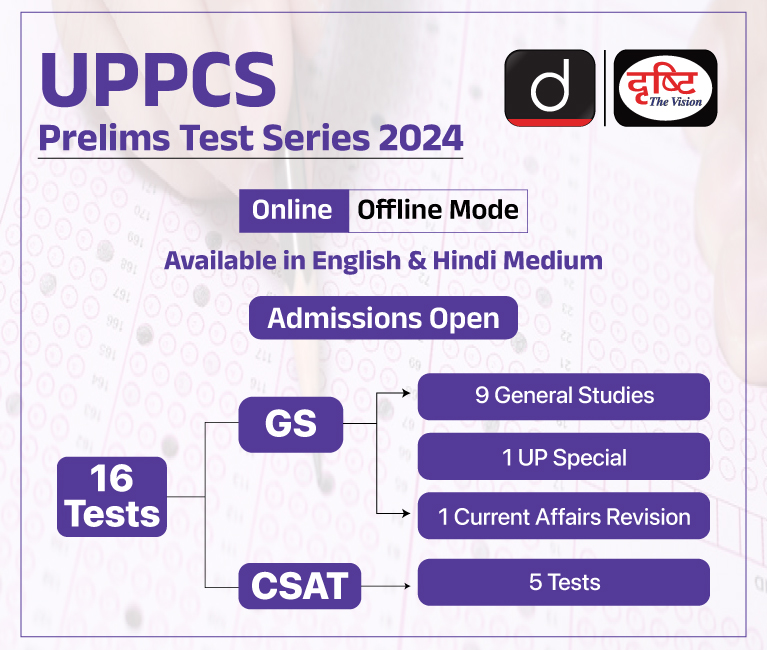
Governance
Cinematograph (Certification) Rules, 2024
For Prelims: Cinematograph (Certification) Rules, 2024, Cinematograph (Amendment) Act, 2023, Central Board of Film Certification (CBFC).
For Mains: Regulating the film industry in India, Indian Movie Market and its significance for the Economy, India's competitiveness in the global film market.
Why in News?
The Ministry of Information and Broadcasting has introduced the Cinematograph (Certification) Rules, 2024, replacing the outdated 1983 rules, in accordance with the Cinematograph (Amendment) Act, 2023.
- The Cinematograph (Amendment) Act of 2023 amended the Cinematograph Act of 1952, which governs the certification, exhibition, and censorship of films in India.
What are the Cinematograph (Certification) Rules, 2024?
- Aim:
- The rules aim to keep pace with emerging technologies and advancements in the film sector to ensure relevance and effectiveness.
- Key Aspects in the Cinematograph (Certification) Rules, 2024:
- Alignment with Online Certification Processes:
- The rules have undergone a comprehensive revision to align with online certification processes, ensuring enhanced transparency, efficiency, and ease of doing business for the film industry.
- Reduction in Certification Time-Lines:
- Time-lines for film certification processing have been reduced, with the adoption of complete digital processes to eliminate all transactional delays.
- Accessibility Features for Films:
- Movies and feature films are required to incorporate accessibility features for certification, making them inclusive for disabled persons as per the stipulated guidelines.
- Introduction of Age-Based Certification:
- The existing UA (Universal Adult) category has been further subdivided into three age-based categories: UA 7+, UA 13+, and UA 16+.
- These age-based markers serve as recommendations for parents or guardians to determine whether the film is suitable for their children, promoting age-appropriate content consumption.
- Enhanced Gender Representation:
- The rules stipulate greater representation of women in the Central Board of Film Certification (CBFC) Board and Advisory Panels, with one-third of the members in the Board and preferably half being women.
- System for Priority Screening of Films:
- Provision for priority screening of films has been introduced to expedite the certification process, particularly for filmmakers facing urgent commitments related to film releases.
- Perpetual Validity of Certificates:
- The restriction on the validity of certificates for only 10 years has been removed, ensuring the perpetual validity of certificates issued by the Central Board of Film Certification (CBFC).
- Recertification for Television Broadcast:
- Edited films intended for television broadcast are required to undergo recertification, allowing only films with Unrestricted Public Exhibition category certification to be shown on television.
- Alignment with Online Certification Processes:
- Significance:
- The overhaul of the rules acknowledges the advancements in film technology and audience demographics over the past four decades.
- Complementing the amendments to the Cinematograph Act in 2023, the new rules simplify the certification process, making it contemporary and globally competitive.
Central Board of Film Certification (CBFC)
- The CBFC is a statutory body operating under the Ministry of Information and Broadcasting, entrusted with regulating the public exhibition of films as per the Cinematograph Act 1952.
- Films can only be publicly exhibited in India once they have obtained certification from the CBFC, ensuring compliance with legal requirements and standards.
- The CBFC comprises non-official members and a Chairman, all appointed by the Central Government, with its headquarters located in Mumbai.
- Additionally, it operates nine Regional offices across India, each equipped with Advisory Panels to assist in the examination of films.
- The Advisory Panels consist of members nominated by the Central Government from diverse backgrounds, serving for a term of 2 years.
Film Industry in India
- The Indian film industry is the largest in the world in terms of the number of films produced and the most globalised industry in the world producing more than 3,000 films annually in more than 40 languages.
- The three largest film industries in India are Hindi, Telugu, and Tamil.
- The Indian film industry, known for its vibrant and diverse cinema, had a market size of over 172 billion Indian rupees in the year 2022. This figure indicates a recovery trajectory, although the industry is still navigating the impacts of the Covid-19 pandemic and the rapid growth of video over-the-top (OTT) culture.
- Video streaming services, including OTT platforms, became very popular in India during the pandemic and lockdowns when people were confined to their homes.
- The online video market in India has a mix of global and local players competing for over 400 million users.
- The jobs created by the television and film industry across the country were estimated to be 4.12 million in the financial year 2022, up from about 2.36 million jobs in the financial year 2017.
UPSC Civil Services Examination, Previous Year Question
Prelims:
Q. A recent movie titled The Man Who Knew Infinity is based on the biography of (2016)
(a) S. Ramanujan
(b) S. Chandrasekhar
(c) S.N. Bose
(d) C.V. Raman
Ans: (a)
- ‘The Man Who Knew Infinity’ is a movie based on the biography of S. Ramanujan (1887-1920), an Indian mathematician, known for his immense contribution in mathematical analysis.
- He was a fellow of the Royal Society.
- Therefore, option (a) is the correct answer.


Science & Technology
Purification Processes of Water
For Prelims: Purification Processes of Water, Reverse Osmosis (RO), TDS (Total Dissolved Solids), Dead water, WHO (World Health Organization), Bureau of Indian Standards (BIS).
For Mains: Purification Processes of Water.
Why in News?
In recent years, Reverse Osmosis (RO) has gained popularity for its ability not only to eliminate impurities and pathogens from water but also to reduce TDS (Total Dissolved Solids) levels, however, concerns arise due to the loss of essential minerals such as calcium and magnesium.
What is the RO Water Purification Method?
- About:
- RO is a water purification process that removes contaminants from water by utilising a semi-permeable membrane.
- A typical RO system consists of a semi-permeable membrane, with pores 0.0001 to 0.001 microns in size.
- In this method, water is forced through the membrane under pressure, while contaminants such as dissolved solids, chemicals, microorganisms, and other impurities are left behind.
- The membrane allows water molecules to pass through while blocking larger molecules and ions.
- The RO process effectively removes a wide range of impurities, including salts, heavy metals, bacteria, viruses, and organic compounds, producing clean and purified water.
- This technology is widely used in both residential and industrial settings to improve water quality for drinking, cooking, and various other applications.
- RO is a water purification process that removes contaminants from water by utilising a semi-permeable membrane.
- Reasons for Growing Demand for RO Water:
- Poor Water Quality: Many regions, especially rural areas, face challenges with poor quality groundwater or tap water. Issues such as brackish taste, unpleasant odour, and contamination with pollutants like chlorine or heavy metals drive people to seek alternative sources of clean drinking water.
- Perceived Health Benefits: There is a common belief among consumers that RO water is healthier and safer to drink compared to untreated or municipally supplied water.
- Despite limited scientific evidence supporting this belief, the perception of improved health outcomes associated with RO water consumption contributes to its popularity.
- Convenience and Accessibility: RO water is readily available through water purification plants and point-of-use domestic RO systems.
- This convenience, coupled with the ease of installation and maintenance, makes it a preferred choice for consumers seeking hassle-free access to clean drinking water.
- Increasing Urbanisation: Rapid urbanisation and population growth lead to higher demand for clean water, especially in urban areas where groundwater contamination and municipal water quality issues are prevalent.
- As a result, the demand for RO water purification systems rises to meet the needs of the urban population.
- Technological Advancements: Continuous advancements in RO technology have led to the development of more efficient and cost-effective water purification systems.
- These innovations make RO water more accessible and appealing to a wider range of consumers.
What are the Concerns Related to the RO Process?
- Loss of Essential Minerals:
- RO systems are highly effective at removing impurities and pathogens from water, including minerals like calcium and magnesium.
- While this purification process ensures clean water, it also leads to a reduction in essential minerals that are beneficial for human health.
- This loss of minerals, especially calcium and magnesium, can potentially contribute to micronutrient deficiencies and pose a public health threat, particularly in regions where people already suffer from such deficiencies.
- Extreme Less TDS Levels:
- In several studies, it was discovered that the Total Dissolved Solids (TDS) level was below 50 mg/l in numerous locations, indicating a significant reduction in calcium and magnesium levels.
- In one study conducted across nearly 4,000 locations nationwide, TDS levels were observed to range from 25 to 30 mg/l, signalling a scarcity of essential minerals in the water.
- RO water was found to display TDS levels of 18 to 25 mg/l in various instances, suggesting a lack of essential minerals. This is called "dead water," deemed suitable for purposes such as battery use but not for consumption.
- In several studies, it was discovered that the Total Dissolved Solids (TDS) level was below 50 mg/l in numerous locations, indicating a significant reduction in calcium and magnesium levels.
- Health Impacts:
- Research suggests that RO systems can remove significant amounts of beneficial calcium and magnesium, leading to potential health issues such as joint pain, coronary heart disease, back pain, and vitamin B12 deficiency.
- Additionally, the WHO (World Health Organization) has highlighted cases where populations experienced health problems, including cardiovascular disorders and muscular cramps, after using RO systems, indicating acute magnesium deficiency.
What are the Other Methods of Purification of Water?
What are the Recommended TDS Limits for Safe Drinking Water?
- The Bureau of Indian Standards (BIS) states that the maximum TDS limit for safe drinking water is 500 milligrams per litre (ppm).
- However, in the absence of any alternative water source, a TDS limit of 2,000 mg/l is permissible.
- In its drinking water standards issued in 2017, WHO (World Health Organization) states that TDS in drinking water should be between 600 and 1,000 mg/l.
- Countries in Europe, the US and Canada have set TDS standards at 500 to 600 mg/l.
What Technologies are Available to Address Mineral-Related Issues Within RO systems?
- To address concerns related to TDS, RO manufacturers introduced TDS controllers (or modulators) and mineral infusion cartridges (or mineralisers) for commercial and residential machines. TDS controllers help set TDS levels in purified water, while mineral cartridges inside the machine infuse specific minerals into water as it passes.
- Reduction of TDS also lowers pH, which increases the acidity of water. Hence, newer RO systems have alkaline cartridges so compounds like bicarbonates and hydrogen oxide can be infused.
Way Forward
- When assessing the need for RO, emphasis should be on the region and the condition of water.
- The RO is only necessary in areas where the surface or groundwater is hard. In many places where surface water is the source of drinking water, a combination of candles, activated carbon and UV filters is sufficient for water purification.
- While RO eliminates toxins like arsenic and fluoride, it may not be the most suitable solution if these toxic elements are the sole concern.
- In regions like Jharkhand and Odisha, where arsenic or fluoride contamination is prevalent, alternative technologies can be employed to specifically target these contaminants.
- For instance, hand pumps are still commonly used in such areas. However, once piped water reaches every household, it becomes the responsibility of the local authorities, such as the municipal corporation or panchayat, to ensure that the water supplied meets BIS standards.
Read more: Groundwater Contamination in India
UPSC Civil Services Examination, Previous Year Questions (PYQs)
Prelims
Q1. Biological Oxygen Demand (BOD) is a standard criterion for (2017)
(a) Measuring oxygen levels in blood
(b) Computing oxygen levels in forest ecosystems
(c) Pollution assay in aquatic ecosystems
(d) Assessing oxygen levels in high altitude regions
Ans: (c)
Q. Microbial fuel cells are considered a source of sustainable energy. Why? (2011)
- They use living organisms as catalysts to generate electricity from certain substrates.
- They use a variety of inorganic materials as substrates.
- They can be installed in waste water treatment plants to cleanse water and produce electricity.
Which of the statements given above is/are correct?
(a) 1 only
(b) 2 and 3 only
(c) 1 and 3 only
(d) 1, 2 and 3
Ans: (d)
Mains
Q. The effective management of land and water resources will drastically reduce the human miseries. Explain. (2016)


Agriculture
India's Basmati Rice Cultivation Dispute and the Direct Seeded Rice
For Prelims: Indian Agricultural Research Institute, Rice, Green Revolution, Indian Council of Agricultural Research, Direct Seeded Rice, World Trade Organisation, Intellectual Property Rights (IPR)
For Mains: Regulations governing intellectual property protection, Direct Seeded Rice method of rice implantation
Why in News?
Recently, India's prized basmati rice varieties, like Pusa-1121 and 1509 Basmati, have been found in Pakistan under new names, raising concerns among Indian scientists at the Indian Agricultural Research Institute (IARI), urging legal action to safeguard Indian farmers and exporters.
- This highlights the urgency for unified action to protect Indian farmers and maintain equitable trade practices.
- In another development, the Federation of Seed Industries of India (FSII) and Sathguru Consultants have emphasised the necessity for collaborative endeavours in rice cultivation, with a particular focus on direct seeded rice (DSR) techniques.
How are Indian Basmati Varieties Illegally Cultivated in Pakistan?
- Illegal Cultivation:
- The cultivation of Indian basmati varieties in Pakistan began with Pusa Basmati-1121 (PB-1121), officially registered as 'PK 1121 Aromatic' in Pakistan.
- Other popular IARI-bred varieties like Pusa Basmati-6 (PB-6) and PB-1509 have also been grown and renamed in Pakistan, posing a significant challenge to Indian agricultural authorities.
- More recent varieties such as Pusa Basmati-1847 (PB-1847), PB-1885, and PB-1886, designed to resist bacterial blight and rice blast fungal disease, have also been identified in Pakistani fields.
- The cultivation of Indian basmati varieties in Pakistan began with Pusa Basmati-1121 (PB-1121), officially registered as 'PK 1121 Aromatic' in Pakistan.
- Implications:
- The unauthorised cultivation of Indian basmati varieties in Pakistan undermines the rights of Indian farmers and breeders protected under the Seeds Act, 1966, and the Protection of Plant Varieties and Farmers' Rights Act, 2001 (PPV & FR Act).
- The Protection of Plant Varieties and Farmers’ Rights Act in India, enacted in 2001, protects the rights of Indian farmers to sow, save, re-sow, exchange, or share the seed/grain produced from registered varieties.
- The Act prohibits selling the seeds of protected varieties in branded form without the breeder's rights.
- IARI-bred improved basmati varieties are registered under this Act.
- The Seeds Act of 1996, allows cultivation of IARI varieties only in the officially demarcated Geographical Indication (GI) area of basmati rice within India.
- All basmati varieties bred by IARI are officially notified under the Seeds Act, 1966 for cultivation.
- These varieties are designated for cultivation within the officially demarcated Geographical Indication area of basmati rice in India, spanning 7 northern states (Punjab, Haryana, Himachal Pradesh, Delhi, Uttarakhand, Uttar Pradesh (west) and two districts of Jammu & Kashmir (Jammu and Kathua)).
- Even Indian farmers are prohibited from violating the breeder’s rights by selling the seeds in branded, packaged, or labelled form.
- These regulations aim to safeguard the intellectual property rights of breeders and ensure the exclusive rights of Indian farmers to cultivate and trade in protected basmati varieties.
- The Protection of Plant Varieties and Farmers’ Rights Act in India, enacted in 2001, protects the rights of Indian farmers to sow, save, re-sow, exchange, or share the seed/grain produced from registered varieties.
- Cultivation of the protected basmati varieties in Pakistan would potentially violate intellectual property rights (IPR) and could be raised by India in relevant bilateral forums and at the World Trade Organisation.
- The unauthorised cultivation of Indian basmati varieties in Pakistan undermines the rights of Indian farmers and breeders protected under the Seeds Act, 1966, and the Protection of Plant Varieties and Farmers' Rights Act, 2001 (PPV & FR Act).
Protection of Plant Varieties and Farmers' Rights Act, 2001
- Rights under the Act:
- Breeders’ Rights:
- Breeders are granted exclusive rights to produce, sell, market, distribute, import, or export protected varieties.
- Breeder's rights include the ability to appoint agents or licensees and seek civil remedies for infringement.
- Researchers’ Rights:
- Researchers can utilise registered varieties for experimentation or research purposes.
- Initial use of a variety for developing another variety is permitted, but repeated use requires prior permission from the registered breeder.
- Farmers' Rights:
- Farmers who have evolved or developed new varieties are entitled to registration and protection similar to breeders.
- Farmers can save, use, exchange, share, or sell farm produce, including protected varieties, subject to certain conditions.
- Recognition and rewards are provided for farmers' conservation efforts related to plant genetic resources.
- Compensation provisions exist for farmers in cases of non-performance of protected varieties.
- Farmers are exempt from paying fees in proceedings under the Act before relevant authorities or courts.
- Breeders’ Rights:
How does this Affect the Global Basmati Market?
- In 2022-23, India exported 45.61 lakh tonnes of basmati rice valued at USD 4.79 billion. India's basmati rice exports are on the brink of reaching record levels, with projections indicating exports of 50 lakh tonnes worth $5.5 billion in the current fiscal year.
- Notably, 89% of the estimated 21.35 lakh hectares of basmati area sown during Kharif 2023 was under IARI-bred varieties, with significant portions under specific varieties such as PB-1121, PB-1718, PB-1885, PB-1509, PB-1692, PB-1847, PB-1, PB-6, and PB-1886, raising concerns about the impact of illicit cultivation on export volumes and revenues.
- Pakistan's basmati exports, although lower than India's, have gained traction due to the depreciation of the Pakistani rupee, enabling competitive pricing in international markets.
- The piracy of Indian basmati varieties by Pakistan poses a threat to India's dominance in key export markets, especially in the European Union and the United Kingdom.
- Pakistan holds an 85% share of the EU-UK market due to its cheaper currency, allowing it to dominate these markets.
- However, India maintains dominance in markets such as Iran, Saudi Arabia, and other West Asian countries, where consumers prefer parboiled rice with harder grains that are less susceptible to breakage during cooking.
Indian Agricultural Research Institute
- The Indian Agricultural Research Institute (IARI) is India's largest and foremost institute in research, higher education, and training in agricultural sciences.
- It played a pivotal role in the Green Revolution, contributing significantly to scientific advancements and the development of appropriate agricultural technologies.
- Established in 1905 in the village of Pusa in north Bihar, it was relocated to New Delhi in 1936 after a devastating earthquake.
- The administrative control of the IARI is vested with the Indian Council of Agricultural Research (ICAR), an autonomous organization established under the Societies Registration Act, of 1860.
What is the Direct Seeded Rice (DSR) Technique?
- About:
- Direct seeded rice (DSR) is a method of rice cultivation where seeds are sown directly in the main field, bypassing the traditional nursery raising and transplanting process.
- Advantages of DSR:
- Labour and Cost Savings:
- Eliminates the need for labour-intensive nursery raising and transplanting, reducing overall production costs.
- Reduces manual labour requirements and associated costs, potentially leading to higher yields and better returns for farmers.
- Water Conservation:
- Reduces water consumption by approximately 40% compared to traditional methods, minimising soil erosion and methane emissions.
- Requires less water than traditional transplanting, making it suitable for areas facing water scarcity.
- Early Crop Maturity: Crops mature 7–10 days' sooner than usual (115–120 days), allowing for the timely planting of successive harvests.
- Labour and Cost Savings:
- Methods of DSR:
- Dry Seeding: Seeds are sown in dry soil, suitable for areas with assured rainfall or irrigation facilities.
- Wet Seeding: Seeds are sown in puddled soil, similar to conditions for transplanting, suitable for areas with assured water availability.
- Challenges:
- Weeds:
- Weeds pose a significant challenge to DSR due to their competitiveness and initial infestation in the absence of water layers, leading to potential yield losses ranging from 20% to 85%.
- Shifts in weed composition and diversity from puddled transplanted rice (PTR) to DSR further complicate weed management strategies.
- Weedy rice, genetically similar to cultivated rice, has become a major concern in areas where DSR is extensively practised, causing significant yield losses and quality degradation.
- Development of Herbicide Resistance:
- Increased herbicide use in DSR has led to the emergence of herbicide-resistant weed biotypes, compromising weed control efforts.
- Root-knot nematodes pose a severe constraint in DSR, affecting crop yield, particularly in areas transitioning from PTR to DSR.
- Root-knot nematodes are plant-parasitic nematodes from the genus Meloidogyne. They are commonly found in soil in regions with hot climates or short winters, and they can cause significant damage to various plants.
- Stagnant Yield:
- Reports indicate yield decline in DSR, attributed to soil sickness, plant autotoxicity, and continuous cultivation without proper rotation.
- Lodging:
- DSR is more prone to lodging compared to the puddled transplanting system (PTR), affecting crop quality and harvest efficiency, necessitating the preference for lodging-resistant cultivars.
- Diseases and Insect Pests:
- DSR is susceptible to various diseases such as rice blast and sheath blight, as well as insect pests, compromising crop health and yield potential.
- Other Challenges:
- Challenges such as exposure of rice seeds to birds and rats, adverse effects of sudden rain after seeding, and uneven crop stand further add to the complexities of DSR cultivation.
- Weeds:
- Possible solutions:
- Integrated and systematic weed monitoring programme. Biocide use for nematode control.
- Hill seeding, lodging resistant cultivars can help to overcome lodging.
- Integrated management as well as bio-technological and genetic approaches may help resolve insect, pest and disease issues.
- Industry Perspective:
- Recognized as a technological advancement in rice cultivation, creating opportunities for businesses involved in seeds, fertilizers, pesticides, and farm machinery.
- Aligns with global sustainability goals, appealing to environmentally conscious stakeholders.
- Economic viability for farmers and the agricultural value chain is evaluated.
- Government Support and Policies:
- Support from government policies and procurement systems is crucial.
- Synergies between Central and state government policies are needed for effective transition to DSR.
Note
- FSII is an industry body of the R&D-based plant science industry, engaged in the production of high-performance quality seeds for food, feed and fibre in India.
Rice
- Temperature: Between 22-32°C with high humidity.
- Rainfall: Around 150-300 cm.
- Soil Type: Deep clayey and loamy soil.
- Top Rice Producing States: West Bengal, Punjab, Uttar Pradesh, Andhra Pradesh, and Bihar.
- It is the staple food crop of the majority of Indian people.
- India is the second largest producer of rice in the world after China.
- In states like Assam, West Bengal and Odisha, three crops of paddy are grown in a year. These are Aus, Aman and Boro.
- National Food Security Mission, Hybrid Rice Seed Production and Rashtriya Krishi Vikas Yojana are few government initiatives to support rice cultivation.
UPSC Civil Services Examination Previous Year Question (PYQ)
Prelims
Q. What is/are the advantages/advantages of zero tillage in agriculture? (2020)
- Sowing of wheat is possible without burning the residue of the previous crops.
- Without the need for a nursery of rice saplings, direct planting of paddy seeds in the wet soil is possible.
- Carbon sequestration in the soil is possible.
Select the correct answer using the code given below:
(a) 1 and 2 only
(b) 2 and 3 only
(c) 3 only
(d) 1, 2 and 3
Ans: (d)
Mains:
Q.1 How is science interwoven deeply with our lives? What are the striking changes in agriculture triggered off by science-based technologies? (2020)
Q.2 Sikkim is the first ‘Organic State’ in India. What are the ecological and economical benefits of Organic State? (2018)
Q. How far is Integrated Farming System (IFS) helpful in sustaining agricultural production? (2019)


Important Facts For Prelims
Black Sea
Why in News?
Russia appointed Admiral Alexander Moiseev as the new acting head of its Navy following a series of successful Ukrainian attacks on Russia's Black Sea Fleet, which has sustained significant losses.
What are the Key Facts About the Black Sea?
- About:
- The Black Sea, also known as the Euxine Sea, is one of the major water bodies and a famous inland sea of the world.
- This marginal sea of the Atlantic Ocean is located between Eastern Europe and Western Asia.
- Geographical Location:
- Land Boundary: The Black Sea is bordered by Ukraine to the north and northwest, Russia and Georgia to the east, Türkiye to the south, and Bulgaria and Romania to the west.
- Maritime Boundary: It is linked to the Sea of Marmara through the Bosphorus Strait and then to the Aegean Sea (an elongated embayment of the Mediterranean Sea) through the Dardanelles Strait.
- The Turkish straits system (the Dardanelles, Bosphorus and the Marmara Sea) forms a transitional zone between the Mediterranean and the Black Sea.
- The Black Sea is also connected to the Sea of Azov by the Strait of Kerch.
- The Turkish straits system (the Dardanelles, Bosphorus and the Marmara Sea) forms a transitional zone between the Mediterranean and the Black Sea.
- Surrounding Mountains: The Black Sea is surrounded by the Pontic in the South, the Caucasus in the East, and the Crimean Mountains in the North.
- Inflowing Rivers:
- The Black Sea is supplied by major rivers, principally the Danube (the second-longest river in Europe, after the Volga in Russia), Dnieper and Dniester.
UPSC Civil Services Examination, Previous Year Questions (PYQs)
Q. Consider the following pairs: (2019)
Sea Bordering Country
- Adriatic Sea : Albania
- Black Sea : Croatia
- Caspian Sea : Kazakhstan
- Mediterranean Sea : Morocco
- Red Sea : Syria
Which of the pairs given above are correctly matched?
(a) 1, 2 and 4 only
(b) 1, 3 and 4 only
(c) 2 and 5 only
(d) 1, 2, 3, 4 and 5
Ans: (b)
Q. Turkey is located between (2014)
(a) Black Sea and Caspian Sea
(b) Black Sea and Mediterranean Sea
(c) Gulf of Suez and Mediterranean Sea
(d) Gulf of Aqaba and Dead Sea
Ans: (b)


Rapid Fire
International Day of Forests
National Zoological Park, New Delhi, recently observed the International Day of Forests on 21st March 2024, under the theme "Forests and innovation: new solutions for a better world."
- The event aimed to raise awareness among visitors about the importance of forests and their role in our lives.
- The United Nations General Assembly proclaimed 21st March the International Day of Forests in 2012 to celebrate and raise awareness of the importance of all types of forests.
- Countries are urged to conduct local, national, and international activities related to forests and trees, like tree planting campaigns.
- The United Nations Forum on Forests, the Food and Agriculture Organization (FAO), and other relevant organisations collaborate with governments to organise these efforts.
- As per the latest India State of Forest Report (ISFR) 2021, India’s total forest and tree cover was 80.9 million hectares, which accounted for 24.62% of the geographical area of the country.
- Madhya Pradesh had the largest forest cover, followed by Arunachal Pradesh, Chhattisgarh, Odisha and Maharashtra.
- India's National Forest Policy, 1988 aims for at least 33% of the total geographical area to be under forest to maintain ecological stability.


Rapid Fire
Hyperloop Technology
Recently, hyperloop technology was highlighted for its energy efficiency and sustainability.
- Hyperloop is a transportation concept developed by Elon Musk in 2013 that would use pressurised tubes and capsules to connect mobility hubs in large cities.
- The capsules, called pods, would float at high speeds using contactless levitation and electromagnetic propulsion systems, along with low aerodynamic drag(the force which is faced by the vehicle as it moves through the air).
- Hyperloop would be a green way to travel that could reduce the need for driving or flying and could also free up traditional train lines.
- Hyperloop technology faces several challenges, including the high cost of building and maintaining the infrastructure, the technical complexity of maintaining a vacuum in the tubes, and the safety concerns associated with operating a high-speed transportation system.


Rapid Fire
Ban on Asbestos in the United States
The Environmental Protection Agency of the United States recently announced a comprehensive ban on asbestos, a carcinogen that kills tens of thousands of Americans every year.
- Asbestos, which was once common in home insulation and other products, is banned in more than 50 countries, and its use in the US has been declining for decades.
- The only form of asbestos known to be currently imported, processed or distributed for use in the US is chrysotile asbestos, which is imported primarily from Brazil and Russia.
- The substance is used to manufacture chlorine bleach and sodium hydroxide, also known as caustic soda, including some that are used for water purification.
- Exposure to asbestos poses severe health risks, including lung cancer, asbestosis (lung scarring), mesothelioma (a rare aggressive cancer), and pleural complications like thickening and fluid buildup.
- India banned the mining of asbestos in 2011, but it still imports and uses asbestos in products like insulation, roofing sheets, and brake linings.


Rapid Fire
Nausena Bhawa
Recently, the Union Minister for Defence inaugurated ‘Nausena Bhawan’, the first Headquarter building of the Indian Navy, in New Delhi.
- Previously, the Navy operated from 13 different locations, necessitating a consolidated headquarters.
- The major bases of the Indian Navy are located at Mumbai, Goa, Karwar, Kochi, Chennai, Visakhapatnam, Kolkata and Port Blair.
- The building has achieved Green Rating IV under the integrated habitability assessment.
- Every year, Indian Navy Day is celebrated on 4th December to respect the Indian Navy’s counter-attack in Operation Trident during the Indo-Pakistan War 1971.



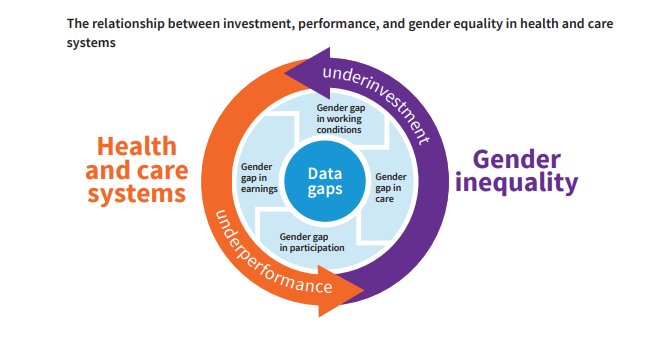
.png)
